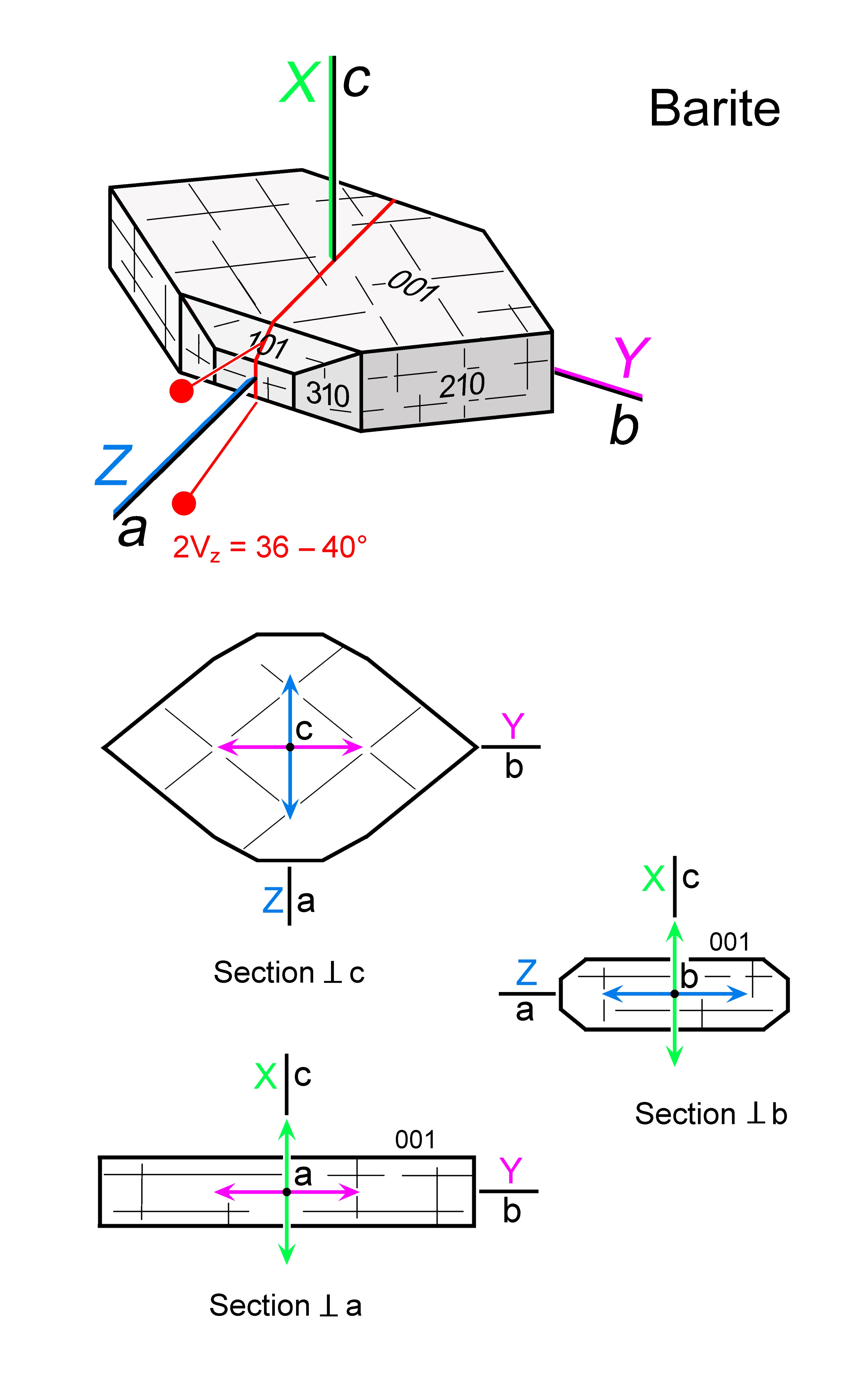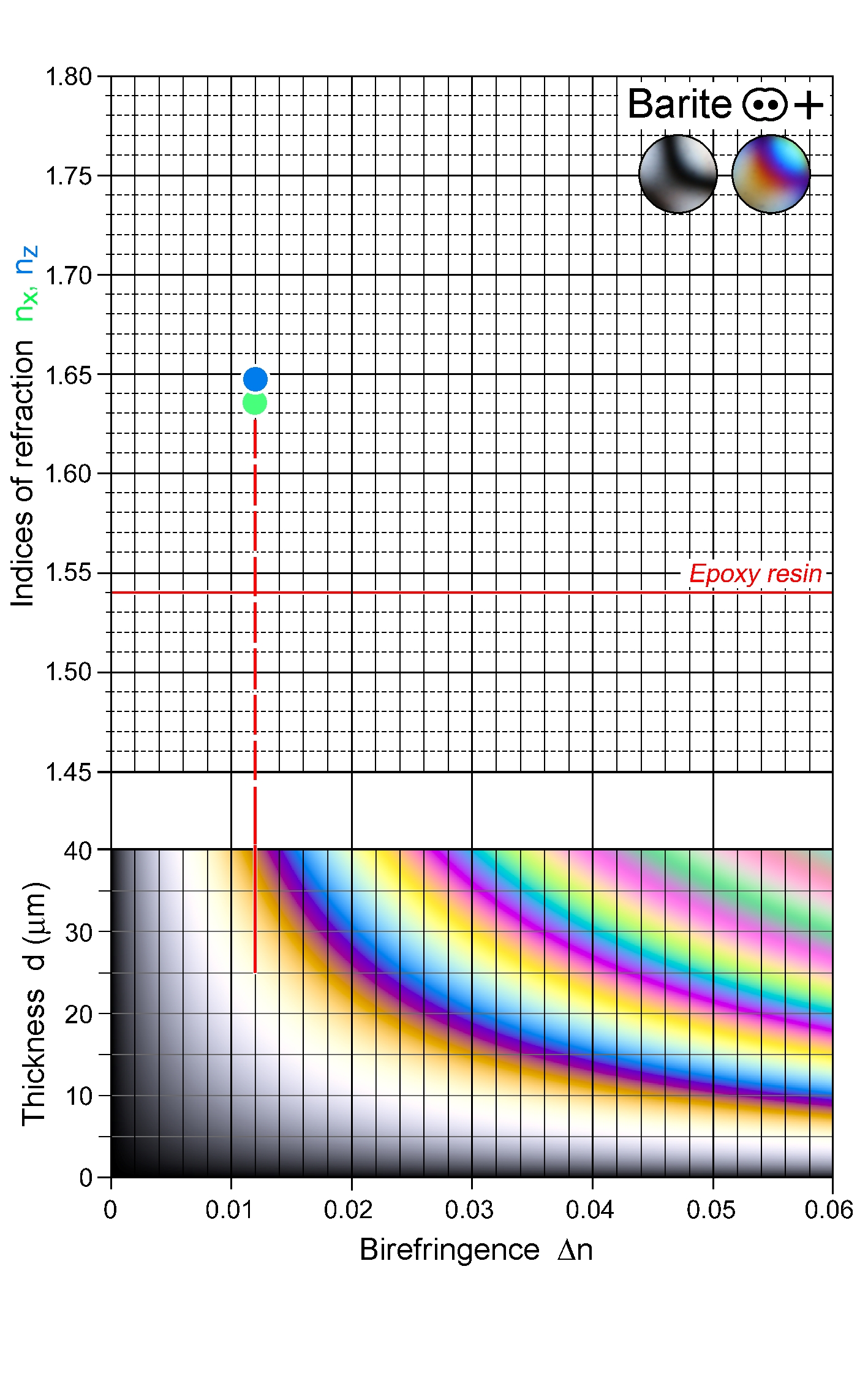|
| Formula | BaSO4 |
| | Optic class & sign | Biaxial positive |
| | Optical orientation | X = c, Y = b, Z = a |
| | Optical plane | (010) |
| | Relief | Moderate-positive |
| | Refractive indices | nx = 1.635 -1.637
|
|
ny = 1.636 -1.639
|
|
nz = 1.646 -1.649
|
|
| n decreases with increasing Sr; increases with increasing Pb |
| | Birefringence (max.) | 0.010 - 0.013 |
| | | Δn decreases with increasing Sr |
| | Optic Angle
| 2Vx
|
| | 2Vz
= 36 - 40° |
| | Sign of elongation | Length-slow, l (+), in sections orthogonal to (001); for elongate crystals, sections ∥ a are length-slow, l (+), as columnar or fibrous crystals are commonly elongate ∥ a |
| | Interference figure | Sections ∥ (100) yield centred acute bisectrix figures with a first-order interference colour background |
| | Colour / pleochroism | Colourless to faintly tinted |
| | Zoning | |
|
|
| Form | Habit | Tabular, flaky, columnar, fibrous, granular |
| | | Surface | Euhedral to anhedral |
| | Cleavage | {001} perfect, 2 sets {210} distinct at 78° to each other |
| | Twinning | Rare; deformation twinning on {110} |
| | Extinction | Sections orthogonal to c: symmetrical to {210} cleavage traces; sections ∥ c: straight to all cleavage traces as well as to traces of {210} and {010} faces |
|
|
| Reaction textures | |
| | Alteration / decomposition | Witherite |
|
|
| Occurence | Ign | Carbonatites; accessory in other igneous rocks |
| | | Met | Rare occurrences |
| | | Sed | Concretions; disseminated in limestone, sandstones, mudrocks; cavity fillings; secondary cementation of sediments |
| | | Hyd | Gangue mineral to hydrothermal veins; primary in submarine VMS deposits; sea-floor chimneys |
| | | Other | |
|
|
| Distinctive properties | Low Δn, relief, characteristic cleavages, specific environments of formation |
| | Additional comments | |
|
|

 Images
Images 


 Images
Images 
